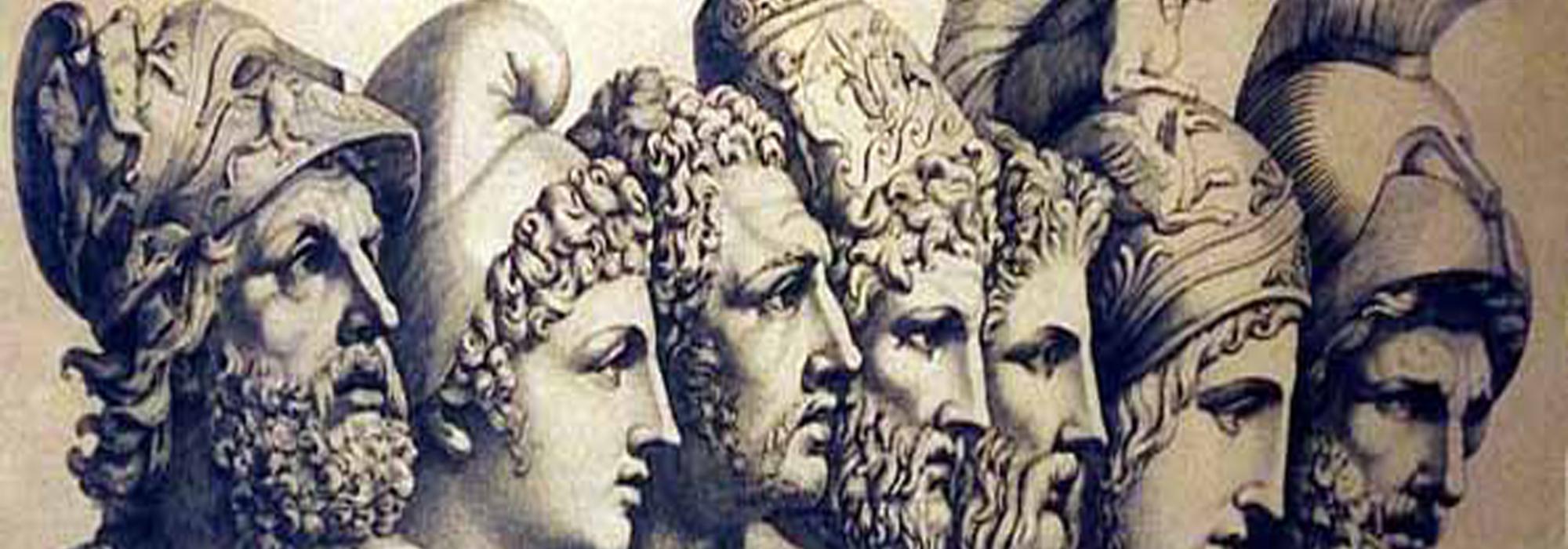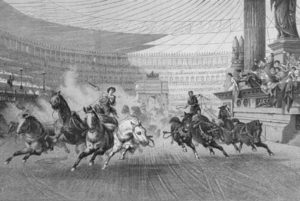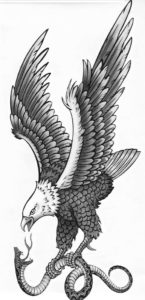Consistency and irony
When Odysseus heads towards the city of Ithaca at first in the disguise of a beggar, stray dogs which are unfamiliar with him start barking and attacking him. He is rescued by the swineherd Eumaeus (O. B14). However, on the following day, as he heads towards his palace in disguise, his pet dog Argus identifies its master through smell and sound, even from a distance “….And a dog that lay there raised his head and pricked up his ears, Argus, steadfast Odysseus’s dog….. when he became aware that Odysseus was near, he wagged his tail and dropped both ears, but nearer to his master he had no longer strength to move.” (O. B17. 290-305). The poet brings a contrast in the behaviour of two different sets of dogs – those that were unfamiliar with Odysseus and one which was. Argus, raising his head, pricking his ears and wagging his tail are such natural reactions of a dog when it sees its master. It also shows the poet’s keen observation of animal behavior and attention to detail. Odysseus is unable to react to the dog’s mannerisms, although he is touched when he sees it. He is in the guise of a beggar and ought not betray his real identity. “… Then Odysseus looked aside and wiped away a tear, easily hiding from Eumaeus what he did;…”(O. B17 303-305). He is forced to hide his emotions. Later, the dog, as though holding on its life with hope, just to catch a sight of his master, dies right after seeing him.
An additional irony is that although Eurycleia the maid recognizes Odysseus in disguise by touching the scar on his leg and even the dog Argus recognizes him by smell and sound, his beloved wife Penelope and his father Laertes do not believe in his identity at first. He is forced to prove his identity to his wife by stringing his own bow which lay rusted in the palace. He speaks of their private bed, which was actually an oak-tree converted into a bed by Odysseus himself for their private chamber. This convinces Penelope of his identity. To his father Laertes, he points the trees which he had planted as a young boy under his guidance. This convinces Laertes about his identify. The irony is that when even an old, half-blind maid and a half-dead dog were able to identify Odysseus, he is not recognized by his own family.
An ideal king and a common man’s perspective
The poet shows through the words of a common man how they idolized the ideal king in Odysseus. The swine-herd Eumaeus himself tells the beggar Odysseus, without knowing his true identity –“….For never shall I find a master so kind, however far I go, not though I come again to the house of my father and mother, where at the first I was born, and they reared me themselves. Yet it is not for them that I henceforth mourn so much, eager though I am to behold them with my eyes and to be in my native land; instead, it is longing for Odysseus, who is gone, that seizes me…....” (O. B14, 135-145). The swineherd, who is not a native of Ithaca, longs more to see his own master than to see his native land or his parents. He has waited faithfully for twenty years for the return of his master.
A woman at a grinding mill, whose name the poet does not mention, longs for the return of the brave king Odysseus. She prays to Zeus in these words: “….Fulfill now even for me that word that I shall speak. May the suitors this day for the last and latest time hold their glad feast in the halls of Odysseus….. may they now sup their last…” (O. B20. 112-119)
We see that it is not just the humans, but even the pet dog Argus who longed for his master’s return.
Detailing of a chariot race
Achilles hosts games in the honour of his dead friend Patroclus. The poet quite literally describes the neck-to-neck competition among the participants: “…. And swiftly then the swift-footed mares of the grandson of Pheres shot to the front, and after them Diomedes’ stallions of the breed of Tros; not far behind were they, but close behind, for they seemed ever about to mount on Eumelus’ chariot, and with their breath his back grew warm and his broad shoulders, for right over him did they lean their heads as they flew along….” (O. B23 373-390) The breath of the horses which are chasing is on the neck of the charioteer who is being chased! The poet shows the proximity and the intensity of the competition in this description. Additionally, it is common in Homer’s works to speak of a person by referring to the lineage he hails from, which helps in establishing the grandeur of the character being spoken of. ‘Agamemnon, the son of Atreus’ and ‘the grandson of Pheres’ as in the current case are common. Even while referring to the Gods or animals, such usage is common – ‘Zeus, the son of Chronus’ and ‘stallions of the breed of Tros’, as in the current example.
Intervention of the Gods: detailing
Gods taking sides in the battles between humans and being jealous of each other is a common theme in the works of Homer. Gods are merely super-human in their power but are victims of human-like emotions. However, they, too, are subject to the laws of Fate and they too cannot understand the doings of Fate. This was probably another unknown factor, which every Greek feared and believed in superstitiously.
Zeus commands the Gods not to intervene in the battle between the Achaeans and the Trojans. Hera, the wife and sister of Zeus, however, is concerned about the Achaeans and decides to help them. She plans to seduce Zeus and put him to sleep while she carries out her will. The poet describes in detail how Hera groomed herself before going to meet Zeus –“…. With ambrosia first did she cleanse every stain from her lovely body, and anointed herself richly with oil, ambrosial, soft and of rich fragrance; if this were but shaken in the palace of Zeus with threshold of bronze, its scent would reach to earth and heaven. With this she anointed her lovely body, and she combed her hair, and with her hands plaited the bright tresses, fair and ambrosial, that streamed from her immortal head. Then she clothed herself in an ambrosial robe which Athene had worked and smoothed for her, and had set on it many embroideries; and she pinned it at the breast with one hundred tassels, and in her pierced ears she put earrings with three clustering drops; and abundant grace shone from them. And with a veil over all did the fair goddess veil herself, a veil fair and bright, all glistening, and it was white as the sun; and beneath her shining feet she bound her fair sandals…..” (IL. B14, 160-190).
Another situation where the work of the Gods is felt is when the river Goddess Thetis requests the God Hephaestus to make a shield for her son Achilles. This is to be a replacement for his armor, which had been seized by Hector after he killed Patroclus. The description of the magnificent shield that Hephaestus prepares for Achilles goes on for nearly 250 lines of dactylic hexameter. “… First he made a shield, great and sturdy, adorning it cunningly in every part, and round about it set a bright rim…. Five were the layers of the shield itself….On it he fashioned the earth, on it the heavens, on it the sea, and the unwearied sun, and the moon at the full, and on it all the constellations with which the heaven crowned…..On it he made also two fair cities of mortal men. In the one there were marriages and feastings….but around the other city lay two armies of warriors gleaming in armor…. On it he set also a king’s estate, in which laborers were reaping, holding sharp sickles…A vineyard….. And in their midst a boy made pleasant music with a clear-toned lyre, and to it sang sweetly the Linos song with his delicate voice; and they beating the earth in accompaniment followed on with skipping feet and dance and shouting…. And on it he made a herd of straight-horned cattle…he cunningly inlaid a dancing floor… On it he set also the great might of the river Oceanus, around the outermost rim of the strongly made shield”(O. B18. 475-618). The brilliant description gives us the impression that the shield is invincible, as would be the person who carries it. With this description, Homer portrays poetically not only the images appearing on the shield but also the effects of those images. The static engravings on the shield cannot really move but he portrays them as if they had been dancing spiritedly. By doubling up two artistic media—artistic etching and poetry, Homer endows the described images with an aesthetic dynamism. The description which in itself is poetry replete with several nuanced suggestions provides a momentary relief from the battlefield. It also gives us a glimpse of the entire universe as seen by the poet.
Omens and superstitions
The Greeks had several superstitions and believed in many omens. The king Alcinous tells Odysseus that tales of sorrow and suffering must not be uttered by a guest when he is eating, and must not be spoken of before going to bed (O. B8.). Although this sounds like a superstition, it has its roots in human psychology.
To the Greeks, omens came in the form of flying eagles, doves, snakes, eggs and much more. One had to be alert, first of all, to recognize an omen when it occurred and then to interpret it correctly. There could be debates about the interpretations and different soothsayers often interpreted it differently. Omens were thought to be used by the Gods to communicate their will to the humans and the humans interpreted it to foretell their own future. This again demonstrates basic human psychology – anxiety concerning the future and preparation for the same. Time and the Gods have always been factors which all human beings have struggled unsuccessfully to control, and this was true of the Greeks too. To them, an eagle flying towards the left, catching a dove and letting it go alive could mean one thing and an eagle that soars from the east with a dead snake in its claws could mean another thing. The eagle had great importance attached to it because it is the pet bird and the vehicle of Zeus.
Here is an example of an omen which the Trojans saw. It was to be interpreted as an indication asking the Trojans to restrain themselves from attacking the ships of the Achaeans. Hector, who ignores it, meets his death. “For an omen had come to them as they were eager to cross over, an eagle of lofty flight, skirting the army on the left, and in its talons it carried a blood-red, huge snake, still alive and struggling, nor was it yet forgetful of combat; for it writhed the neck, and the eagle, strung with pain, cast it from him to the ground, and let it fall in the midst of the throng, and himself with a loud cry sped away down the blasts of the wind. And the Trojans shuddered when they saw the writhing snake lying in their midst, a portent of Zeus who bears the aegis”. (IL. B12. 195-210). The snake symbolized the Trojans and the eagle, the Achaeans; the death of the snake was the defeat the Trojans.

















































